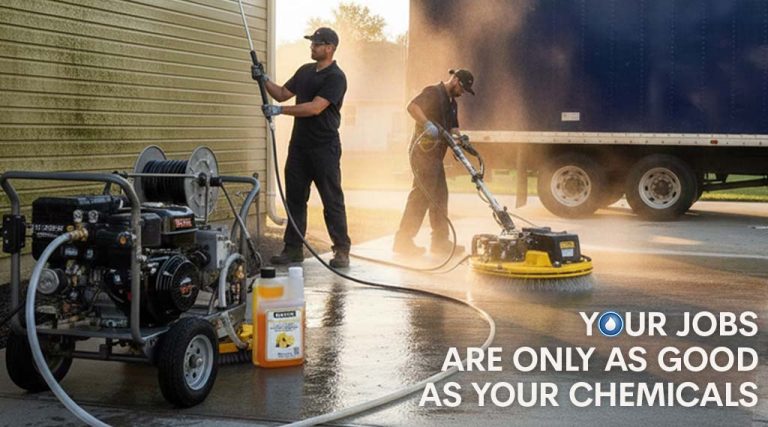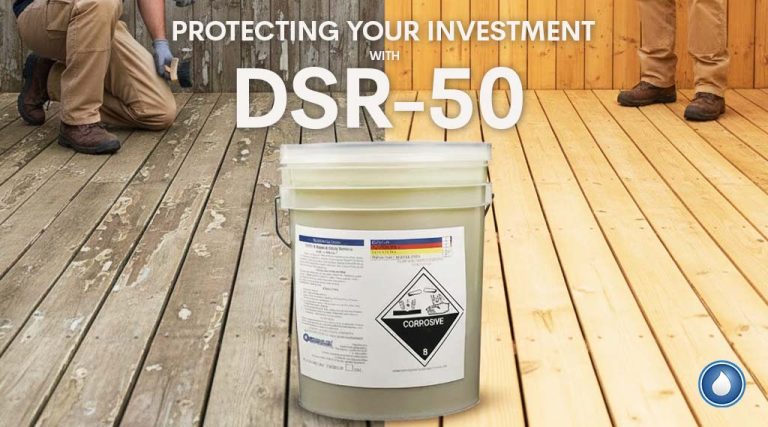- Home
- /
- PowerWash Industry
- /
- Oil Burner Maintenance
Subscribe To Our Newsletter
Stay in the know on the latest products, deals, events, tips & tricks.
Social Media
Oil Burner Maintenance
MAINTENANCE TIPS
Oil Burner Maintenance
Larry Hinckley
PowerWash.com of Fort Worth
This article is designed to assist IKECA members in the maintenance and first echelon of repair for their pressure washers.
Everything is relative. What seems extremely tall to a field mouse might appear to be rather short to a giraffe. With this thought in mind, I won’t try to delve into the structural stability of the oil burner. I will simply try to cover the basic maintenance and trouble shooting of the oil burner as it relates to the pressure washing industry.
Years of experience as a maintenance mechanic have taught me the wisdom of the old saying, “an ounce of prevention is worth a pound of cure.” There is no better way to be reasonably certain that your heater will serve you as it is intended than to take care of it. You should only use clean, top quality fuel. You should use a fuel filter with a water separator. You should check the water separator daily. You should change your filter periodically as needed. It should be noted that the majority of burner problems stem from bad or dirty fuel, or water in the fuel. You should always top your fuel tank off before putting your unit away for the night. This keeps condensation from forming in your fuel tank.
This troubleshooting guide is based on the burner design type in which the motor has an ignition transliterating continuously and where the fuel flow is controlled by a fuel solenoid which is operated by a vac-on switch, pressure switch, or flow switch.
When you experience a burner problem, always go back to the basic concepts. You need three things in mind: your burner should be in the “on” position, depress the trigger on your gun, and establish a flow of water from your pressure nozzle. At this point you should detect a white vapor coming from the exhaust stack. This tells you that you have fuel to the burner chamber. Your problem is either too much combustion air, insufficient fuel pressure or loss of spark. If your unit has been operating without problems and this symptom suddenly occurs, chances are that your problem is either loss of spark or loss of fuel pressure. The reason I say this is air adjustments do not change if they are locked down correctly. There are many ways to test your unit to determine the nature of the problem, but we will deal with the most common and expedient method.
The first thing to do is install a fuel pressure gauge in the gauge port of your fuel pump. Re-start your unit and monitor the fuel pressure. Depending on your unit, it should read 105 psi to 140 psi. If the pressure is low, attempt to adjust it. If it will not adjust, replace the fuel pump. If the pressure is correct, then test the burner transformer. This method is crude but effective. With your unit in operation, open the transformer. Using a large, well insulated screwdriver, lower the blade to create a short electrical arc across the transformer terminals. The arc should begin at approximately 1/4″ from the terminal. (CAUTION: VOLTAGE IS IN EXCESS OF 10,000 VOLTS) Slowly lift the screwdriver approximately 3/4″. A bad transformer will give you a short weak arc, or none at all. If you have a bad or weak transformer, replace it.
I take hundreds of phone calls each week pertaining to service problems. The most common problem seems to be “the burner doesn’t work” and in the majority of cases the problem is a lack of fuel to the burner chamber. This problem is not always caused by the fuel unit. Most of the machines used today in the industry are trigger control units. This means simply that they are equipped with some type of unloader to regulator which allows the water to bypass internally when the trigger is released on your trigger gun. The way this relates to the burner section is that when you interrupt the flow of water you must also stop the fire inside your burner or you will end up with a steam explosion. So to accomplish this, a solenoid valve is placed in the fuel nozzle fuel line. This solenoid is controlled most commonly by one of 3 methods: 1.) Vac-On Switch; 2.) Flow Switch; 3.) Pressure Switch.
In each case the name of the device used is descriptive of how it works. The vac-on switch is operated by the vacuum created when the pump is allowed to draw the precise amount of water it needs to create from 2 in. to hg. 5 in. hg. The flow switch is activated when the trigger gun is opened, and your pressure switch is activated when the trigger is pulled on your spray gun causing water to flow through the flow switch. The pressure switch is activated when the trigger gun is opened and your pressure reaches a pre-determined amount (usually about 550 psi). Now, the way this controls your burner is that when one of these switches closes, it allows electricity to flow through to your burner. When you release your trigger, the flow of water stops. This opens the switch, stopping the flow of electricity. This in turn closes the solenoid valve, stopping the flow burner fuel. Now that you understand how this works it will be easier for you to trouble shoot your burner problems.
The reason I say this is because sometimes the reason your burner won’t work is because you have low pump pressure, too much water going into your pump, or any number of other reasons.
The best way to test a fuel solenoid to see if it is operating correctly is to bring your unit up to full operating conditions. With the burner switch on and the trigger depressed, hold the blade of a pocket screwdriver inside the solenoid coil. If the coil magnetizes you will feel it pull your screwdriver. If it doesn’t pull your screwdriver, then you either have a bad coil or you’re not getting power to the coil. The way that you determine which is the case without a volt OHM meter is to wire around the vacon switch, pressure switch, or flow switch. If you do this, you must not release your trigger while testing the unit as the burner will continue to fire with no water flow. If after doing this you still don’t have magnetism in the coil, you must then use a test meter to determine why.
However, if bypassing this switch solves your problem then you must go further to determine whether you have a bad switch or some other problem. If it is a bad switch, replace it. If it is a pump or unloader problem, look for the solution to be published in a future article. In the meantime, call me at our toll free number 1-800433-2113 and I will help you determine the nature of your problem.
Another problem we run across is no fuel to the burner, despite having fuel to the pump and the fuel solenoid in working order. On a Suntec fuel pump, there is a hidden adjustment screw located under a plastic plug in the lower left hand corner of the pump body. This adjustment is usually a sign of imminent fuel pump failure. Once you’ve had to do this you should keep a spare fuel pump handy because it is only a matter of time before you will need it.
Most hot water pressure washers and steam cleaners are equipped with a high temperature limiting switch. Some switches are adjustable and some are fixed adjustment switches. Some machines have both. The purpose of the “high limit” switch is just as the name implies, to limit the upper level of your temperature range. The fixed adjustment switch is the most commonly used because of simplicity and economics. The fewer moving parts you have, the less chance of a failure and the lower the manufacturing cost. Actually, only 2% of the people who have adjustable limit switches are usually wired in such a way that if your unit should exceed their rated temperature, a set of internal contacts will open thus killing all power to the burner. Once this happens, the limit switch must cool down below the rated limit of the switch for the contacts to again close and allow the burner to begin its heating cycle.
Thermostats are usually wired to close a fuel solenoid, thus stopping the flow of fuel to the burner nozzle once the temperature reaches the level selected by the machine operator. This provides cleaner and more efficient operation than starting and stopping the entire burner.
The important thing to remember when you experience a burner problem is that if you have lost all power to the burner, it could be the high limit switch. The way to test this is to simply bypass the switch by tying the two wires together. WARNING: This is only a temporary test measure. Do not operate your machine without some form of high limit switch.
If your burner quits burning, but you still have power and you are using a thermostat again, simply bypass the thermostat by tying the two wires together. If this works, replace the thermostat.
In the majority of cases, you will have found your problem by following the recommendations above.
Mr. Larry Hinckley is the Senior Technical Advisor for PowerWash.com of Fort Worth. For more information, contact Hinckley at 1-800-433-2113.
This article appeared in the September 1992 edition of “The Scratch Pad”
Share This Post
More To Explore
Winter Pressure Washing Maintenance Checklist
Winter Pressure Washing Maintenance Checklist Prepared for Contractors by PowerWash.com. Winter is the most important time of year to protect ...
2025 Tax Changes, New Rigs & Easy Payments: What Power Washing Pros Need to Know Before Dec 31
Updated for the latest federal guidelines. PowerWash.com does not provide tax advice. Always consult your CPA. As the year comes ...
Your Jobs Are Only as Good as Your Chemicals: Here Are the Ones That Stand Out
If your busy season has you running from job to job, you already know this: the equipment you use matters, ...
Stripping Wood the Smart Way (Not the Hard Way)
Deep Wood Restoration Made Simple with DSR-50 Whether you’re a professional deck and fence restoration contractor or a homeowner prepping ...




